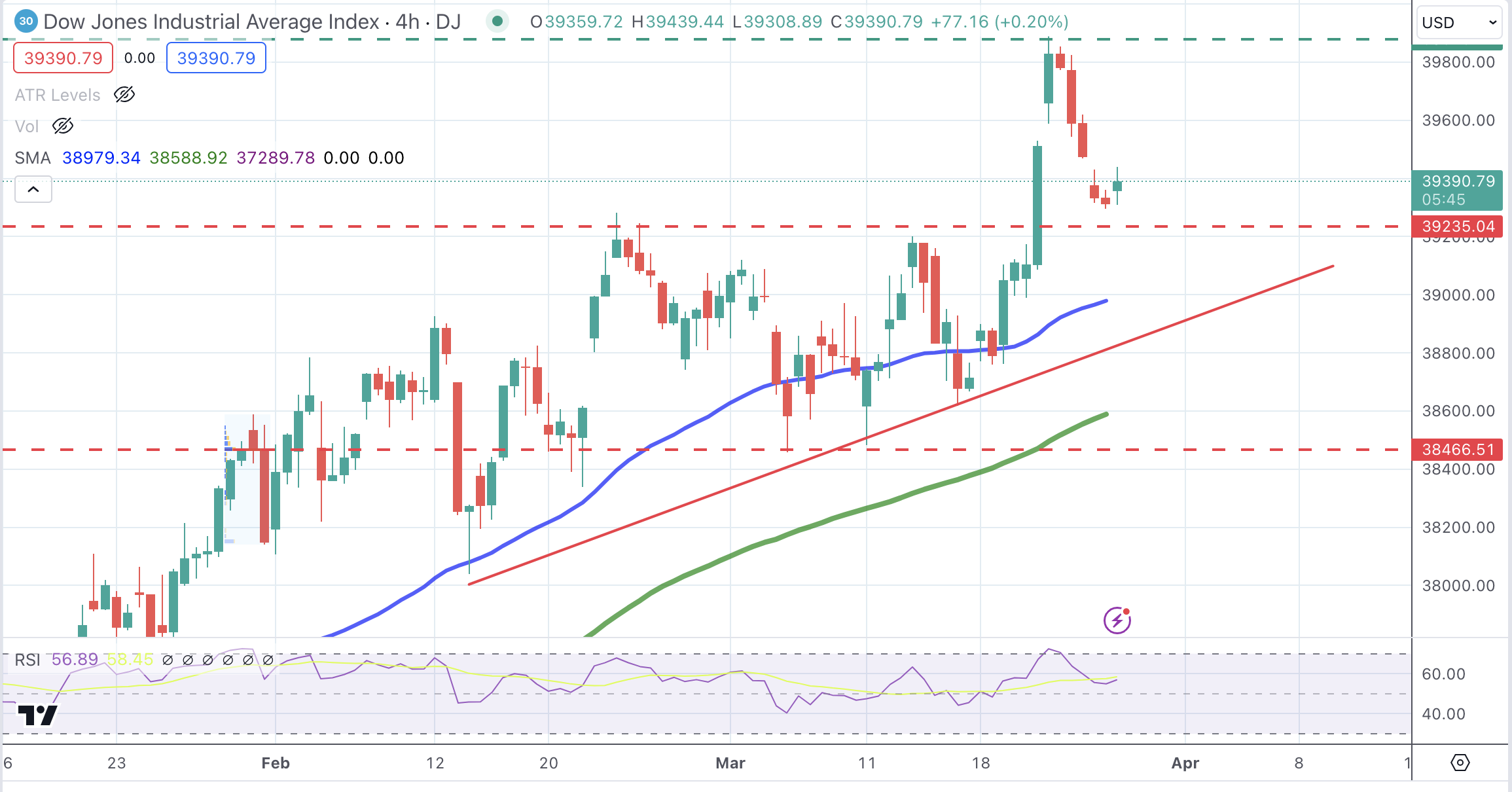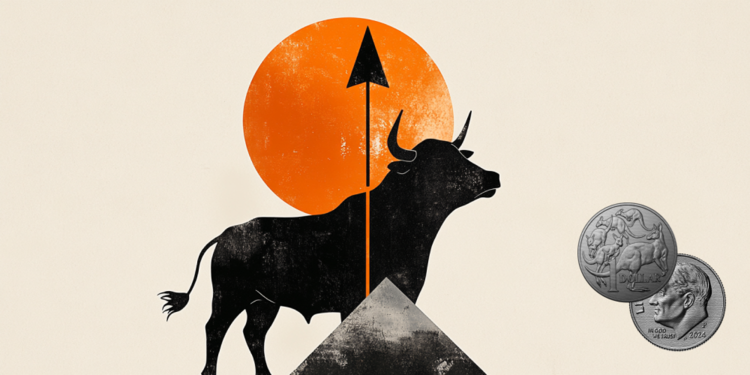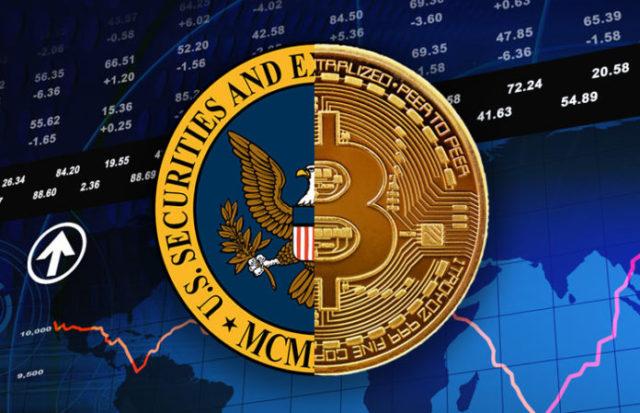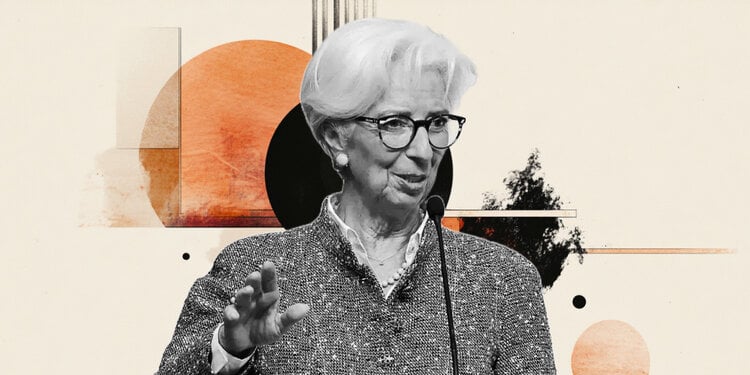- The Dow Jones rises on Tuesday in a quiet session before Easter.
- Market sentiment is moderately positive, buoyed by hopes that the Fed will begin cutting rates in June.
- Trading volume remains at low levels, with investors awaiting PCE Price Index data on Friday.
The Dow Jones Industrial Average (DJIA) shows a slight advance in early trading on Tuesday. Wall Street opened the session in green, with large-cap growth stocks leading the gains.
However, the index remains far from the all-time highs reached on Thursday. The Federal Reserve's dovish policy statement increased investor confidence that the Fed will begin to unwind its tightening policy in June, driving global equity markets higher.
This week, the US Federal Reserve's agenda is not very packed, and investors will focus on Friday's US Personal Consumption Expenditure Price Index data for further clues on the outlook. of the Fed's monetary policy.
Dow Jones News
The Dow Jones index rose 0.2% in Tuesday's session. Wall Street opened the session with marginal gains, recovering Monday's losses in a week shortened by Easter.
By sectors, discretionary consumption and communication services lead the gains, while energy and public services are the ones with the worst results.
United Health Group (UNH) leads Tuesday's gains with a 1.3% advance, followed by Honeywell International (HON), up 1.1%, and Goldman Sachs (GS), with a 1.0% advance. On the falls side, 3M (MMM) is the stock that performs the worst, with a loss of 1.5%, followed by Boeing (BA), with a decrease of 1.2%, after learning that its CEO, Jeremy Calhoun, leave the company.
Dow Jones Technical Outlook
The overall trend of the Dow Jones index remains bullish despite the recent pullback from all-time highs. The bears have held back above the previous highs, in the 39,260 area, leaving the trend of higher highs and higher lows intact so far.
Sellers should break above that level to increase bearish momentum and open the way towards 39,000 and 38,650. To the upside, resistances lie at the previous high of 39,900 and the psychological level of 40,000.
Dow Jones Industrial Average 4-hour chart

Frequently Asked Questions About the Dow Jones
What is the Dow Jones?
The Dow Jones Industrial Average, one of the world's oldest stock indices, is made up of the 30 most traded securities in the United States. The index is weighted by price rather than capitalization. It is calculated by adding the prices of the securities that comprise it and dividing them by a factor, currently 0.152. The index was founded by Charles Dow, also founder of the Wall Street Journal. In recent years it has been criticized for not being sufficiently representative, as it only tracks 30 companies, unlike broader indices such as the S& P 500.
What factors influence the Dow Jones index?
There are many factors that drive the Dow Jones Industrial Average (DJIA). The main one is the aggregate performance of its component companies, revealed in quarterly corporate earnings reports. US and global macroeconomic data also contribute, influencing investor sentiment. The level of interest rates, set by the Federal Reserve (Fed), also influences the DJIA, as it affects the cost of credit, on which many companies largely depend. Therefore, inflation can be a determining factor, as well as other parameters that influence the decisions of the Federal Reserve.
What is the Dow theory?
The Dow Theory is a method for identifying the main trend of the stock market developed by Charles Dow. A key step is to compare the direction of the Dow Jones Industrial Average (DJIA) and the Dow Jones Transportation Average (DJTA) and only follow trends where both are moving in the same direction. Volume is a confirmation criterion. The theory uses elements of maximum and minimum analysis. The Dow theory proposes three phases of the trend: accumulation, when the smart money begins to buy or sell; public participation, when the general public joins the trend; and distribution, when the smart money abandons the trend.
How can I trade with the DJIA?
There are several ways to trade the DJIA. One of them is to use ETFs that allow investors to trade the DJIA as a single security, instead of having to buy shares of the 30 companies that comprise it. A prominent example is the SPDR Dow Jones Industrial Average ETF (DIA). Futures contracts on the DJIA allow traders to speculate on the future value of the index, and options provide the right, but not the obligation, to buy or sell the index at a predetermined price in the future. Mutual funds allow investors to purchase a portion of a diversified portfolio of DJIA securities, providing exposure to the global index.
Source: Fx Street
I am Joshua Winder, a senior-level journalist and editor at World Stock Market. I specialize in covering news related to the stock market and economic trends. With more than 8 years of experience in this field, I have become an expert in financial reporting.







